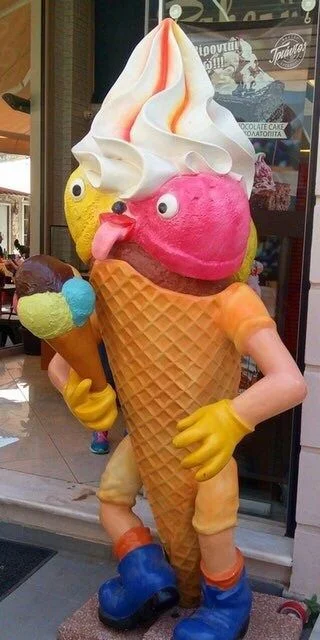In the age of digital content creation and manipulation, a peculiar niche has emerged – the realm of cursed image editors. These eerie tools have gained popularity among internet users, allowing them to distort and manipulate images in bizarre and unsettling ways. This article explores the phenomenon of cursed image editors, their origins, their impact on online culture, and the ethical considerations surrounding their usage.
I. The Genesis of Cursed Image Editors:
Cursed image editors can trace their roots to the rise of meme culture and internet subcultures. Early online communities experimented with image manipulation as a form of expression, creating bizarre and surreal visuals that defied traditional aesthetics. As these edits became more extreme and unsettling, the term “cursed images” was coined to describe the eerie and discomforting nature of these creations.
Over time, developers and enthusiasts recognized the demand for specialized tools that could facilitate the creation of cursed images. This led to the emergence of cursed image editors, dedicated software or apps designed to distort and morph images in ways that evoke a sense of unease and uncanniness.

II. Features of Cursed Image Editors:
Cursed image editors come with an array of features that enable users to transform ordinary images into haunting and otherworldly compositions. These features may include:
- Distortion Filters: Cursed image editors often provide a range of distortion filters that can warp and twist images beyond recognition. These filters can create unsettling visual effects that challenge the viewer’s perception of reality.
- Glitch Effects: Introducing glitches and digital artifacts into images is a common feature of cursed image editors. These effects give the impression of a corrupted or malfunctioning image, adding an extra layer of discomfort.
- Face Manipulation: Cursed image editors may offer tools for manipulating facial features, turning ordinary portraits into grotesque and surreal representations. This can include stretching, warping, or merging facial elements in unconventional ways.
- Color Manipulation: Altering the color palette of an image can contribute to its cursed quality. Cursed image editors often allow users to experiment with unusual color combinations, further intensifying the unsettling atmosphere.
III. Impact on Online Culture:
Cursed image editors have become integral to the evolution of online culture, particularly within meme communities and social media platforms. Here are some key ways in which they have influenced digital content creation:
- Meme Culture Evolution: Cursed images have become a subgenre within meme culture, attracting a dedicated fan base. The ability to create and share these eerie images has led to the development of a unique online aesthetic that challenges traditional norms of visual representation.
- Social Media Trends: Cursed images frequently go viral on social media platforms, leading to the creation of hashtags and challenges centered around cursed content. Users compete to create the most unsettling and bizarre images, fostering a sense of community among those who appreciate the dark and distorted.
- Artistic Expression: Cursed image editors have provided a new outlet for artistic expression, allowing users to explore unconventional and avant-garde visual styles. Some artists use these tools to create thought-provoking pieces that challenge societal norms and expectations.
IV. Ethical Considerations:
While cursed image editors offer a novel means of creative expression, their usage raises ethical questions regarding the potential impact on individuals and society. Some key considerations include:
- Mental Health Concerns: The unsettling nature of cursed images may have unintended consequences, triggering anxiety or discomfort in certain individuals. As the popularity of these images grows, it is crucial to be mindful of their potential impact on mental health.
- Desensitization: Constant exposure to disturbing and surreal images could contribute to desensitization, where individuals become less sensitive to real-life distress or horror. Cursed image editors walk a fine line between entertainment and desensitization, necessitating responsible usage.
- Online Harassment: The ease of creating and sharing cursed images also raises concerns about their potential misuse for online harassment. Ensuring that these tools are not weaponized to harm or harass others is a challenge that both developers and users must address.
Conclusion:
Cursed image editors represent a fascinating and unconventional aspect of digital content creation, pushing the boundaries of traditional aesthetics and sparking new trends within online culture. While these tools offer a unique form of artistic expression, it is crucial to navigate their usage responsibly, considering the potential impact on mental health and societal norms. As cursed image editors continue to evolve and capture the imagination of internet users, their role in shaping the digital landscape will undoubtedly be a subject of ongoing discussion and exploration.
FAQS
Why would someone use a cursed image editor?
Some people might use a cursed image editor for fun or humor, as it allows them to create or manipulate images in a way that appears strange, creepy, or unsettling. It can be a form of entertainment or a way to participate in online meme culture, where cursed images are shared for amusement.
When was the cursed image editor created or released?
The cursed image editor does not have a specific creation or release date, as it is not a distinct software or application. “Cursed image” is a term used to describe unsettling or strange images, and people may use various image editing tools to create or enhance such images. There isn’t a single editor dedicated to cursed images; instead, people use different software based on their preferences and needs.
